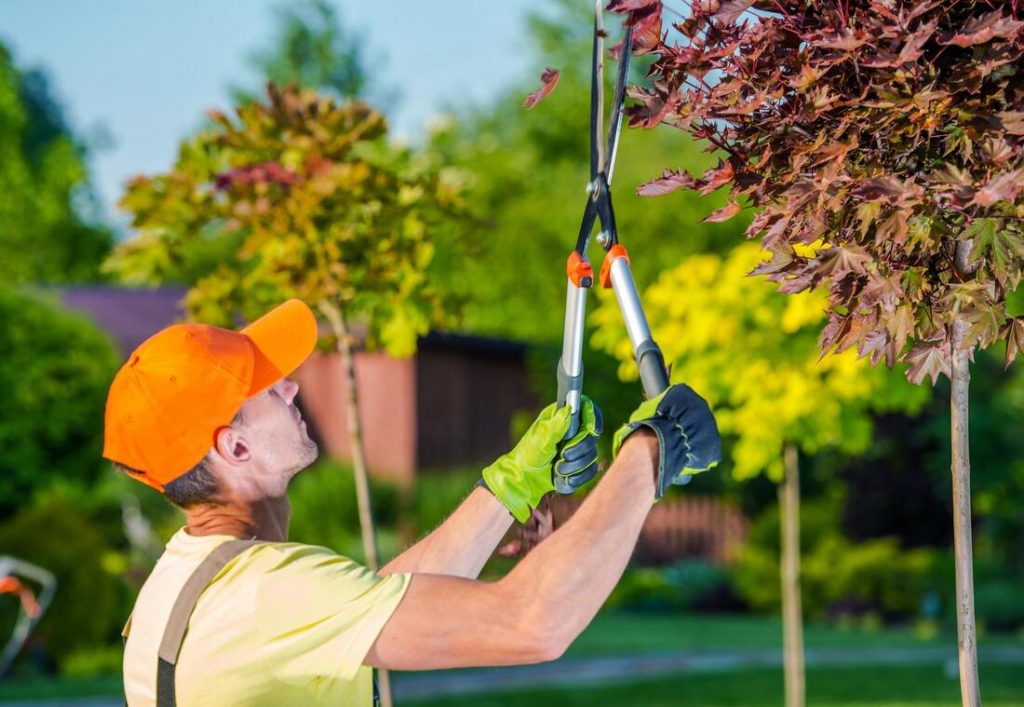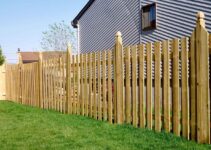Trimming and pruning trees or hedges isn’t as nearly as simple as people might think it is. There’s a lot more to it than it meets the eye. It’s not just about picking up the tools and just randomly cutting away at any branch you come across. It’s quite opposite of that, in fact.
You need knowledge and expertise if you want to successfully trim or prune a tree. Think of pruning or trimming like a haircut. If you have long hair, it’s important to cut it from time to time to allow it to grow even better, stronger and healthier. It’s the same thing with your trees. You’re getting rid of “dead” branches and twigs so that the other ones can grow.
Of course, you can trim purely out of aesthetic reasons, but you’d still have to do it according to some rules. Before we get to those rules, or better yet, dos and don’ts, we’re going to briefly take a look at trimming and pruning, see if there’s a difference and why is it important that you know what to do. So, without further ado – let’s get started.
What’s Tree Trimming And Pruning?

Source: reliabletreecare.com
Contrary to popular belief – trimming and pruning aren’t the same thing. They both involve the removal of twigs and branches – but for slightly different reasons.
Trimming is mostly about aesthetics. It’s about the looks. You see, if you leave the tree unattended – it can grow wild. It can grow in various directions, it can grow uneven, it can lean, it may become unbalanced and so on. Trimming helps keep it the way we want it. Extra branches are removed, dead branches also and we’re left with a shape we enjoy and like. Basically, trimming is about chopping and cutting away all the unnecessary branches and twigs so we can make a tree look a certain way.
With pruning, even though we’re still focused on shape and beauty, we’re also thinking of the tree’s health. Some can grow bigger and healthier only if they’re pruned. This process helps them become more resilient to pests and diseases, promotes better and healthier fruit yields, encourages growth and so on.
When And How Often Should You Prune Or Trim A Tree?

Source: vintagetreecare.com
In most cases, a tree should be pruned once or twice a year, depending on the species. When it comes to trimming, pretty much any time a tree looks “off” – it could be a good time for a trim. Of course, this doesn’t mean that you should do it every two weeks as you’d pretty much kill the tree within months.
Like we’ve said, pruning is usually done once or twice a year but it varies based on the species. Some are pruned early in the spring, some during the winter. Some are even pruned during the middle of the summer, although, you really need to know your trees before you do this because if you chop-chop a wrong one during the summer you risk killing it.
According to viennavatreeservice.com, you are always better off consulting with an arborist before you begin pruning a tree you’re unfamiliar with. Also, if you’re not certain you’d do a good job – you can always call up a professional help and have them do it for you.
Dos & Don’ts – Trimming & Pruning

Source: treesurgeonservice.com
If you’re willing to give trimming and pruning a try and you don’t mind spending the day in the sun, cutting off dead and overgrown branches – here’s what should and shouldn’t do!
- The first thing you should do before picking up the scissors is inspecting the tree. Don’t just start cutting – look at the tree first. You should never just randomly cut branches off – this has to be done strategically. Also, after a heavy storm or a wind hits – always make sure to check up on your tree. It may have suffered some structural damage that you need to tend to.
- Second of all, you have to learn how to do this. Naturally, you’ll get better at it as time goes by and you get familiar with the process, but before you even start, get familiar with the basic concepts and techniques like cleaning, raising, size reduction and density reduction. Also, learn the proper way to cut off a branch, because if you don’t do it correctly – you might do some damage.
- When it comes to trimming, make sure you do it strategically. First of all, you have to get rid of the branches that are overgrown or close to your roof or power lines – so always start there.
- Some species have to be pruned, lemon trees, for instance, if you want to make sure your fruit yields are great – a year in and year out.
- Never top the tree. Even though it’s a popular trimming method, it does more damage than it does good – so, forget about it. It’s not uncommon for some to not recover from topping, so we would strongly advise against it.
- Broken and damaged branches should never remain a part of the foliage. They can only do damage and they should always be removed.
- You should never prune more than 30% of the foliage. If you do – you’re risking possibly irreversible damage which is not something you’d like we’d assume.
- Never prune or trim unless it’s necessary. And never trim or prune a sapling that’s under a year old. At that time, it’s not properly formed and you might stump its development or even kill it.
- Always use safety equipment – don’t fool around. You won’t be less of a man if you put on a pair of safety goggles and gloves to protect yourself from cuts, bruises or splinters.
- Never climb a tall tree without safety equipment and a great pair of ladders. A good looking crown won’t feel as important if you fall and injure yourself.
- Never use a chainsaw on branches that are high off the ground – for obvious safety reasons.
There you have it. As you can see – there are a lot of rules when it comes to trimming and pruning. We hope you take them to heart and keep them in mind next time you pick up the scissors to do some foliage chopping.







